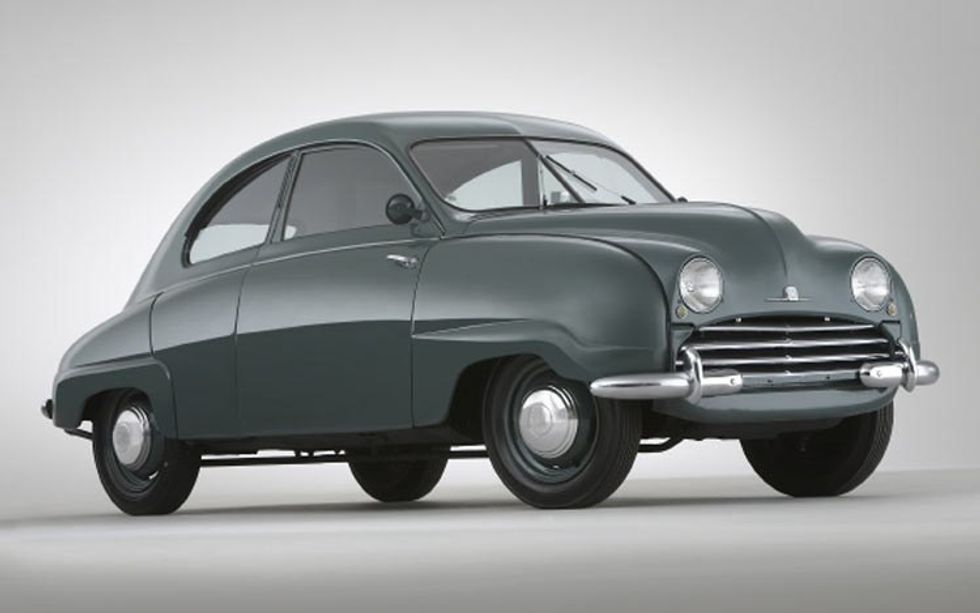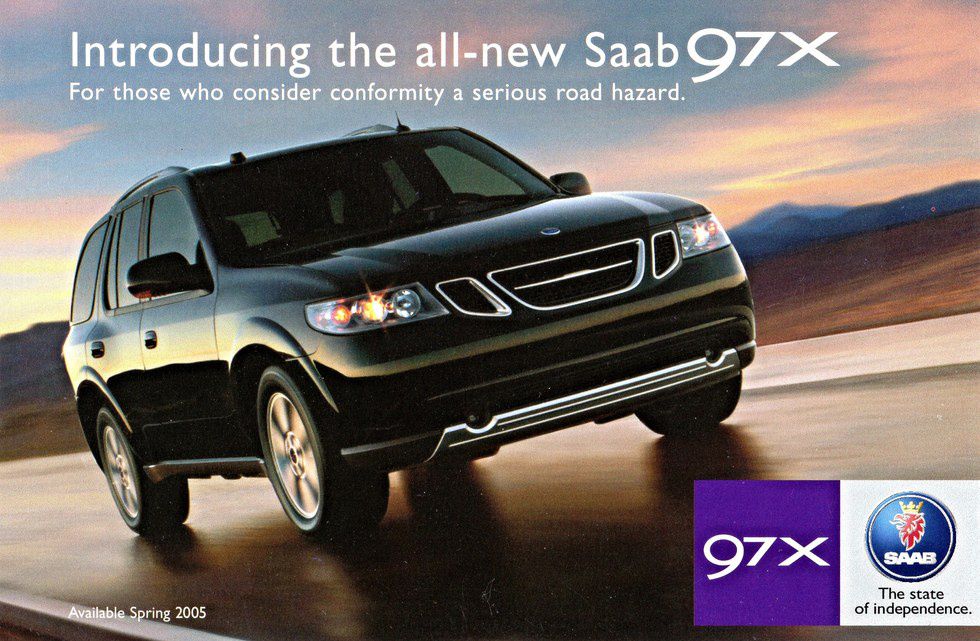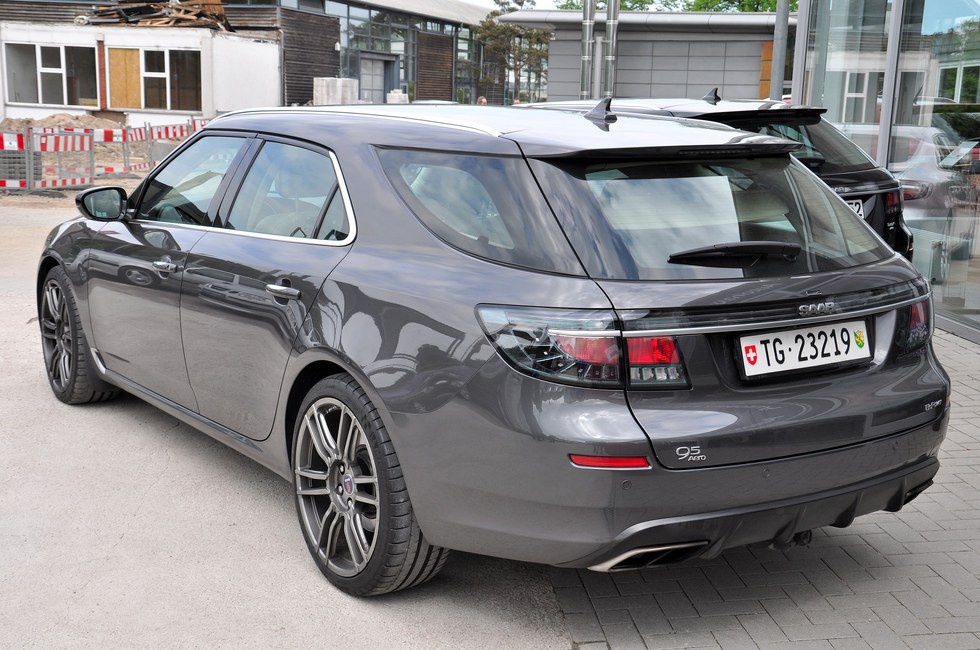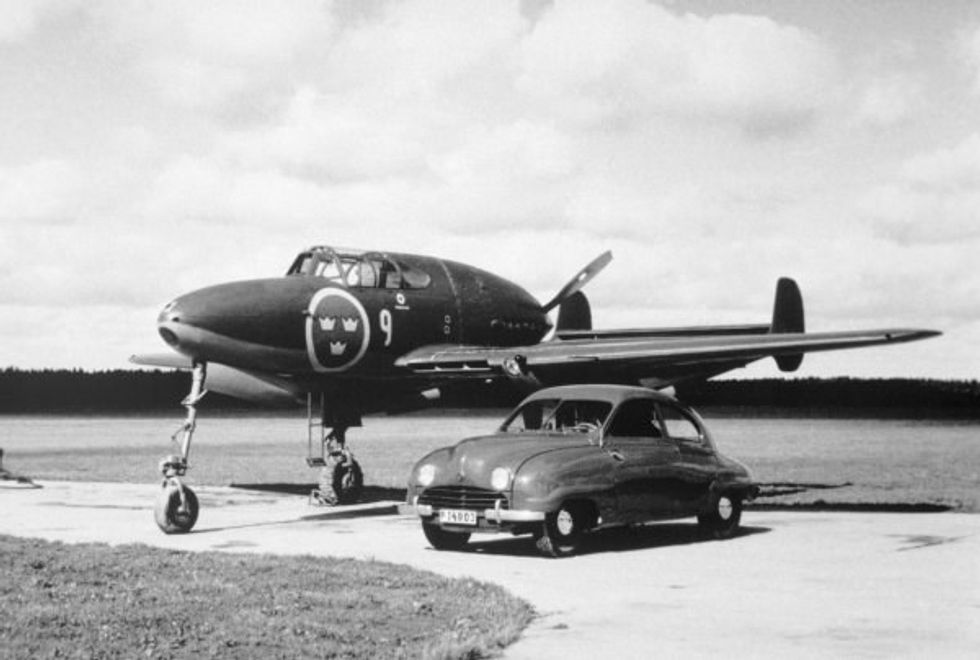Be it horsepower or efficiency, safety or comfort, car companies are always pushing the limit. Motivated by their competition, they strive not to just meet the industry standard, each company wants to raise it. When properly done, these advances resonate through the auto industry. For instance, Audi pioneered all-wheel drive technology in their sedans in the 1980s. Seeing the advantages, the rest of the industry has developed their own AWD systems, but Audi is not the only company to have made such technological leaps. The true spirit of innovation was found in a small Swedish automaker called Saab. Short for Svenska Aeroplan Aktiebolaget, or Swedish Aeroplane Corporation, Saab was a car company led by airplane engineers. From seat belts to turbo chargers, they explored the world of performance and safety unlike many other brands, and much of their work is seen today in other companies. This begs the question: why did Saab fail?
Saab's first model, the 92, was the basis for the company's signature teardrop design language.
From the beginning, the Swedish automaker's goal was to produce a car unlike any other. Led by a team of aircraft engineers, they made sure their cars were designed with purpose. Their first model, the 92 was released in 1950. The car sported a highly aerodynamic teardrop shape, a design feature few car companies were concerned about at the time. Another fairly unique feature for the time was front wheel drive. With Scandinavia's harsh winters, the weight of the engine over the drive wheels provide better traction for snow and ice. An unprecedented side-effect of this was how successful the front wheel drive platform was for rally racing, a characteristic Saab carried on the rest of their cars
The company's unique looks, precise engineering and ergonomics as well as their forward approach towards safety quickly built a cult-like following. Every feature was designed with a purpose, branding Saab as the car for intellects. For instance, the spoiler on the 95 was not for sport, rather it was to prevent dust from collecting on the back windshield. With sales climbing, Saab began to take larger and larger leaps. The manufacturer became the first company to offer seat belts as standard equipment, and later, the company pioneered active head restraints to prevent whiplash in an accident. Perhaps Saab's most widely seen contribution to the auto industry was its successful utilization of turbo chargers. Virtually every car company since has slapped a turbo onto its engines. With all of this successful innovation, it's hard to understand how Saab began to fall. The truth is, we cannot completely blame GM for the brand's failure
This Saab owner shows the true spirit of the brand
The beginning of the end traces just prior to Saab's ownership under GM. The company, despite its popularity, had not turned a profit in almost a decade. Saab desperately needed funding to stay afloat for the long term and started hunting for offers. GM ultimately made the better deal and slowly took more and more control of Saab in the 90s. Saab's fate was written in stone.
On paper, GM ownership seems amazing. With a large parent company behind them, Saab - in theory - would be free to play with extremely deep pockets. They could continue to take leaps in innovation, and begin moving upscale in the market. After all, GM wanted a European luxury brand to compete against the Germans. Unfortunately, this was not the case. Tiff Needel - racing driver and (original) Top Gear presenter - saw through it immediately.
Despite all the promise, things quickly began falling apart for the brand. Saab was forced into GM's corporate badge engineering practices, forcing the company to stray from its independent innovation. Its new GM based models proved to be unreliable, unrefined and lost many of the thoughtful touches Saab was known for. The brand was losing its originality and sportiness, causing mass defection of their loyal customers to other brands. Saab was quickly becoming a shell of its former glory. All that seemed to remain was the console mounted ignition.
Badge engineering at its finest: you have definitely seen this SUV. GM sold the same SUV with six different badges. The 9-7x was by far, the least Saab-like Saab the company ever made.
With their resources heavily restricted and vanilla flavored, Saab engineers did what they could with the bland GM platforms they were given. Attempting to make their work seem less American and more European, Saab's funding was too sparse to innovate, but more importantly, too little to fulfill GM's wish. It became apparent that chasing down the Germans required more than a high price with low quality and out of date amenities. Just watch Jeremy Clarkson - on Top Gear at the time - rant about how the Saab 9-5 wanted so badly to punch above its weight class.
Under GM, Saab never rolled out another brand new lineup past the nineties. In fact, GM seemed to forget how product life cycles work, as the first iteration of the 9-5 was around for eleven years. The industry average for a redesign is about five years. The slow product cycle compounded the company's lack of funding, as slow sales yields less revenue, leading to slower and lower quality product development, causing sales to slow even more. Unable to get the proper funding for their unique philosophy, Saab never picked up steam again. Even with their new corporate slogan, "Born From Jets" - a cue from Saab's past - the company just did not appeal to the mass market anymore. Then, the Great Recession hit and GM went into full panic mode.
Saab did experience one last gasp of air just prior to its sale. The redesigned 9-5 kicked off a stunning new design language for the brand, but it was too little too late. Although the sedan made the cutoff, the new Saab 9-5 SportCombi was never certified. It cannot be legally driven on public roads, but some enthusiasts tried changing that.
GM began making massive cuts and sales after going bankrupt. After several deals fell apart, GM eventually sold the failing brand to boutique Swedish super car manufacture Spyker in 2011. To no surprise, funding quickly dried up, but GM's influence was still felt. Since the Saab models were still GM's designs, GM became fearful that their patents would be stolen by potential Chinese buyers. They blocked Saab's sale out of fear, further deepening Saab's crisis. While attempting to sue GM for damages, Spyker was finally able to sell Saab in 2012 to a pseudo-Swedish company called National Electric Vehicle Sweden (NEVS). Based in Sweden but with roots and funding from China, NEVS wanted to make Saab into an electric car company, but they have yet to produce an EV.
Upon buying Saab, NEVS quickly ran into hot water as suppliers were still demanding money. After only producing a few hundred cars and temporarily halting production, Saab AB - the aircraft manufacture and Saab's original parent company - revoked the privileges to the Griffin logo and the Saab name to prevent any further damage to the brand's identity. NEVS still exists and continues to hold the rights to manufacture the highly outdated GM era Saab 9-3.
For now, Saab is in limbo - not entirely dead at the moment, but certainly not alive. The company still holds a loyal following, spurring hope that another company can restart the tarnished brand, rebuilding its legacy and authenticity. The industry needs an automaker who is willing to push the boundaries further than anyone else, and no one can do it like Saab could.












 The minimum wage is not a living wage.
StableDiffusion
The minimum wage is not a living wage.
StableDiffusion
 influential nations
StableDiffusion
influential nations
StableDiffusion












